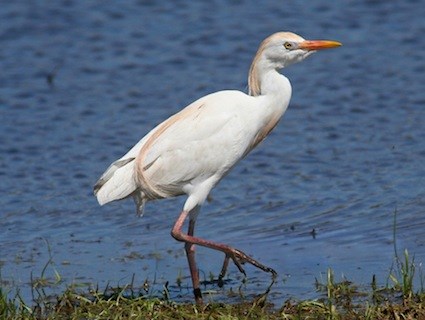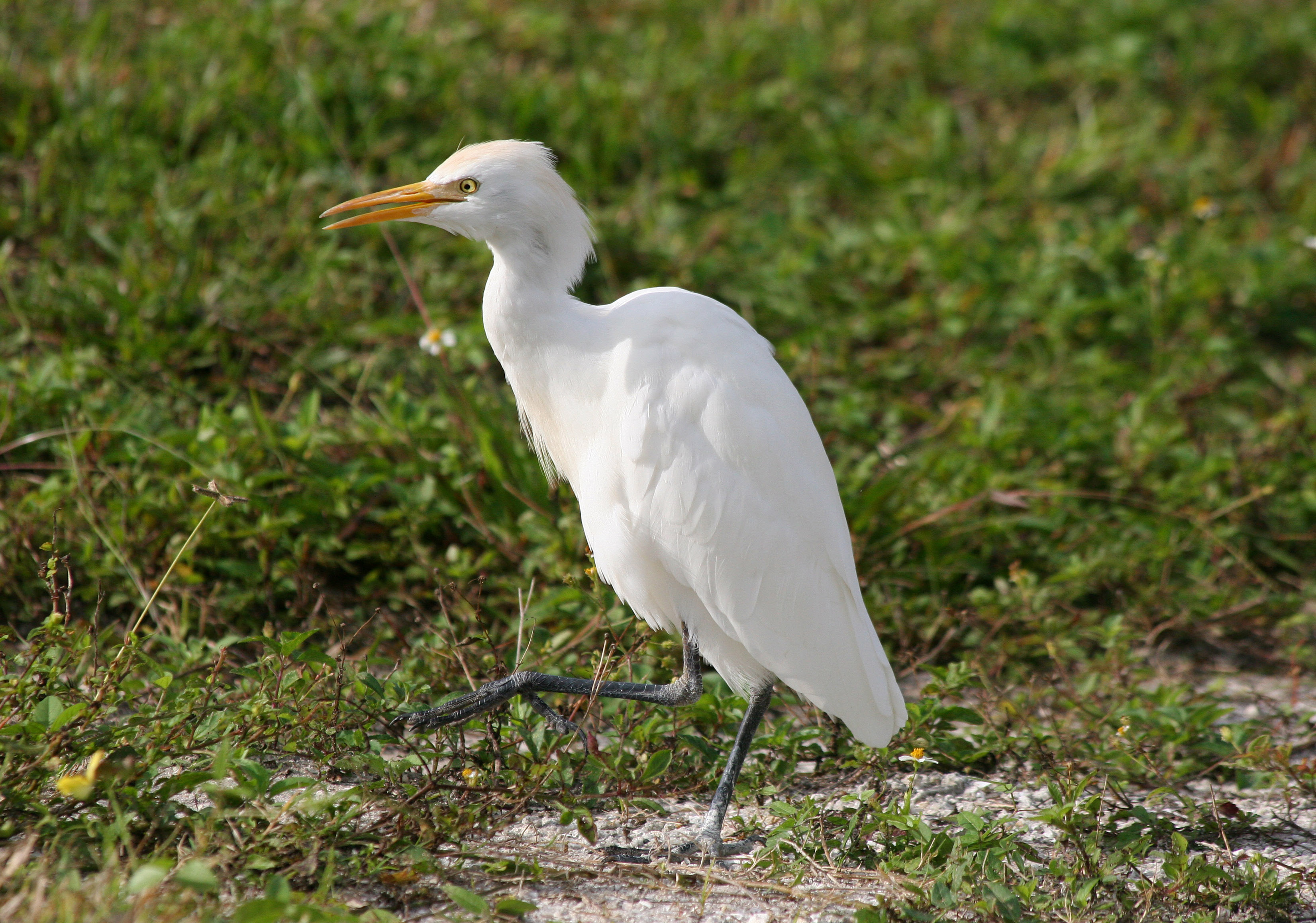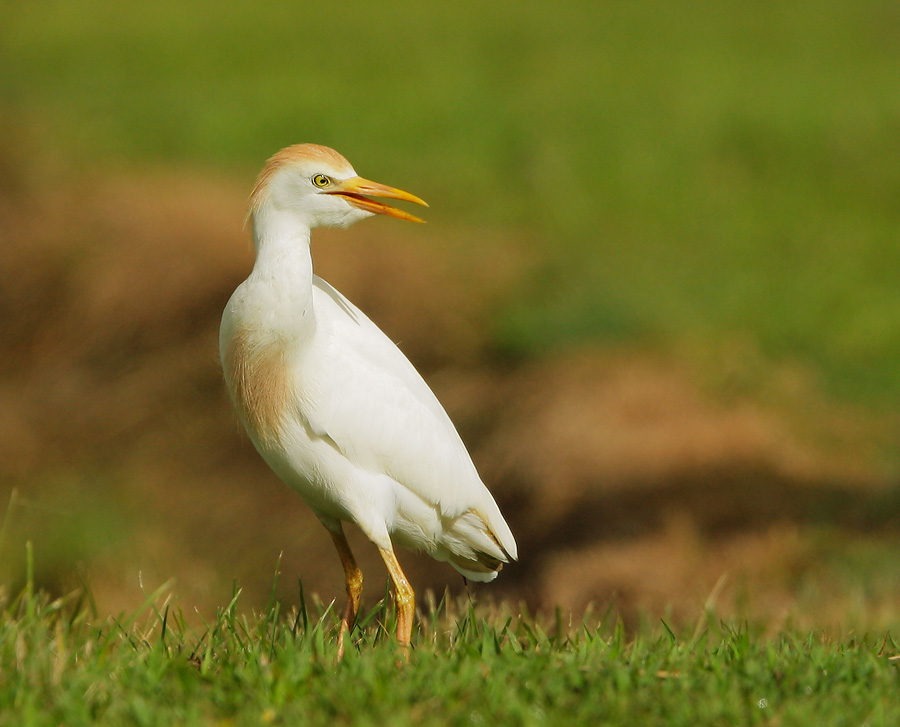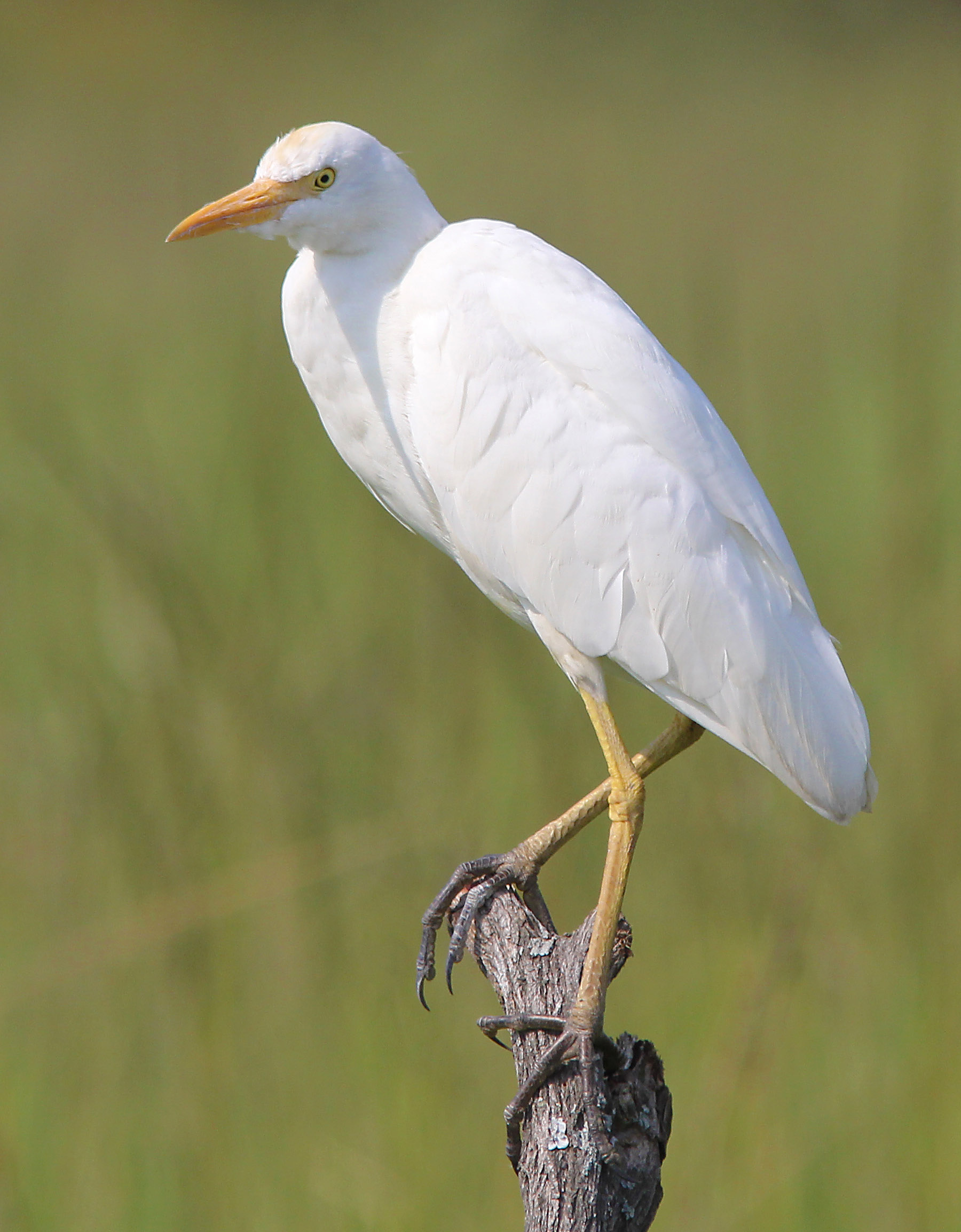
Egretta ibis
SUBFAMILY
Ardeinae
TAXONOMY
Ardea ibis Linnaeus, 1758, Egypt. Three subspecies.
OTHER COMMON NAMES
English: Buff-backed heron; French: Hйron garde-boeufs; German:
Kuhreiher; Spanish: Garcilla Bueyera.
PHYSICAL CHARACTERISTICS
A short-legged white egret. Has a relatively short yellow bill,
and in breeding season attains a buff wash over much of its
body. Length is 18–22 in (46–56 cm); weight is 12–14 oz
(340–390 g).
DISTRIBUTION
Mid latitudes to warm temperate zone in North America and
South America, Europe, Africa, Asia, and Australia.
HABITAT
Forages in native grasslands and in pastures alongside hoofed
livestock. Also uses irrigated alfalfa fields, dumps, parks, athletic
fields, golf courses, meadows, rice fields, lawns, and road
margins. Nests in colonies with other wading birds, usually on
islands over or surrounded by water.
BEHAVIOR
Walks slowly adjacent to moving cattle or other hoofed stock
and may perch on these animals as they rest or move from
place to place. Walks with the head alternately withdrawn and
then pulled forward with each step, a gait characteristic of the
species. Cattle egrets are among the most social of herons,
forming small and large flocks on their feeding grounds. Feeds
during the day, most actively in the morning and afternoon.
During midday and at other times when grazing stock rest to
ruminate, foraging flocks often loaf with other birds in trees or
on the ground near the resting herd. At night, it roosts with
other species, sometimes in the thousands.
FEEDING ECOLOGY AND DIET
Captures food made obvious by the movement of cattle, native
large mammals, birds, or tractors. In Africa, its primary natural
beater was probably the African buffalo (Syncerus) but also follows
many other species. Locusts, grasshoppers, and crickets
are the common element of its diet worldwide. Other insects
also eaten include flies, beetles, caterpillars, dragonflies,
mayflies, and cicadas.
REPRODUCTIVE BIOLOGY
Nesting season varies according to food availability. In the
temperate north, it nests in spring and summer. In the tropics,
nesting occurs at the end of the rainy season, as grasslands are
drying out. The birds are highly colonial, breeding in mixedspecies
colonies of a few hundred pairs to several thousand
pairs. The nest is made of reeds, twigs, or branches, 16 in (40
cm) wide. Eggs are white with a pale green or blue tinge,
broad oval and somewhat pointed, lighter than most other
medium-sized egrets. The clutch is usually four to five eggs.
Incubation lasts about 24 days. Parents share care of the
chicks. Young are guarded until day 10, leave the nest and
climb in nearby branches at two weeks, fledge at 30 days, becoming
fully independent in 15 more days. Nesting success is
usually fairly high.
CONSERVATION STATUS
Probably the most abundant heron in the world.
SIGNIFICANCE TO HUMANS
Usually is easily recognized and not persecuted on its feeding
ground in that it is perceived to be beneficial or neutral to cattle
activities. However its tendency to develop large new
colonies in and near towns and villages creates what may be
perceived to be public nuisances. Efforts to control the populations
can adversely impact other herons, whose conservation
status may be more of a concern.
Photo Gallery of - Cattle egret




 Animalia Life
Animalia Life